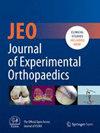Artificial intelligence applications in the management of musculoskeletal disorders of the shoulder: A systematic review
Abstract
Purpose
The aim of the present review is to evaluate and report on the available literature discussing artificial intelligence (AI) applications to the diagnosis of shoulder conditions, outcome prediction of shoulder interventions, and the possible application of such algorithms directly to surgical procedures.
Methods
In February 2024, a search of PubMed, Cochrane and Scopus databases was performed. Studies had to evaluate AI model effectiveness for inclusion. Research on healthcare cost predictions, deterministic algorithms, patient satisfaction, protocol studies and upper-extremity fractures not involving the shoulder were excluded. The Joanna Briggs Institute Critical Appraisal tool and the Risk of Bias in Non-randomised Studies of Interventions tools were used to assess bias.
Results
Thirty-three studies were included in the analysis. Seven studies analysed the detection of rotator cuff tears (RCTs) in magnetic resonance imaging and found area under the curve (AUC) values ranged from 0.812 to 0.94 for the detection of RCTs. One study reported Area Under the Receiver Operating Characteristics values ranging from 0.79 to 0.97 for the prediction of clinical outcomes following reverse total shoulder arthroplasty. In terms of outcomes of rotator cuff repair, an AUC value ranging from 0.58 to 0.68 was reported for prediction of patient-reported outcome measures, and an AUC range of 0.87–0.92 was found for prediction of retear rate. Five studies evaluated the identification of shoulder implant models following TSA from radiographs, with reported accuracy ranging from 89.90% to 97.20%.
Conclusion
AI application enables forecasting of clinical outcomes, permits refined diagnostic evaluation and increases surgical accuracy. While promising, the translation of these technologies into routine clinical practice requires careful consideration.
Level of Evidence
Level IV.


 求助内容:
求助内容: 应助结果提醒方式:
应助结果提醒方式:


